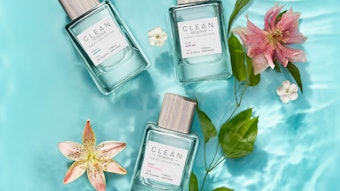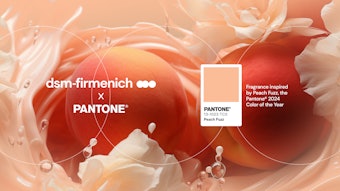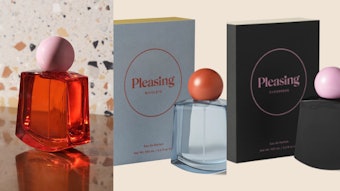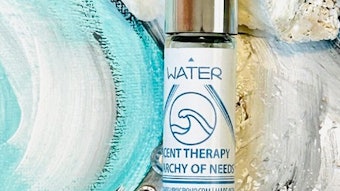Players in premium fragrances have for some time been blighted by saturation of usage in key markets, increased consumer price consciousness and competition between retailers. Yet, growth of 3% in 2004 is indicating that manufacturers’ attempts at rejuvenation of this highly mature sector are having some impact. Euromonitor International looks at key regions and markets, monitors trends throughout the last year and recommends future strategies for maximizing the category’s potential.
Meltdown in Mature Markets
Western Europe and North America account for almost 80% of global premium fragrances sales in value terms. In spite of their formidable size, average annual growth since 2000 has been somewhat disappointing with both regions consistently registering rates below the global average. After three years of shrinkage, North America appears to be coming out of the doldrums with gains of nearly 3% for the second year running in 2005.
The beleaguered U.S. market received a boost from a number of new launches in the men’s arena, including Armani Code, Ralph Lauren Black and Kenneth Cole Signature. All were supported by bold advertising campaigns, resulting in 5% growth in men’s premium fragrances versus 2.5% in women’s fragrances.
The explosion of celebrity fragrance launches after the success of Curious Britney Spears in 2004 fueled growth in premium women’s fragrance. That high growth witnessed in 2004 was not quite echoed in 2005.
Manufacturers are exploiting the migration of consumers toward the mass retail environment with innovative strategies geared to this arena. Elizabeth Arden introduced its Curious Britney Spears premium fragrance into the mass market channels to great success, with specially designed smaller packages at price points under $20. Although economic recovery and increasing consumer confidence is in part responsible for the revival of premium fragrances here, manufacturers in other regions can rest assured that creativity and perseverance can go some way toward rescuing a floundering sector.
Waning Sales in Western Europe
The performance of Western Europe, which recorded growth of slightly more than 1%, has been blighted by the region’s present economic difficulties and the increasing availability of premium fragrances through mass market channels and the Internet that brings down unit prices.
France remains the undisputed champion in Western Europe’s fragrances, topping the $10.4 billion sector with a 22% slice. Yet, Spain is rising up the ranks with growth momentum that is expected to see it overtake Germany by 2010, closing the gap on France. The latter has hit saturation point, with sales declining every year for the last three.
Despite this, celebrity and fashion label fragrances have proven unceasingly popular, a phenomenon that has helped sustain the high-end segment, as have the advent of one-off, customized scents and the surprising comeback of old favorite brands. Expanding the consumer core by creating perfumes for teens, tweens and even babies has also contributed to sales. Men’s fragrances are proving more dynamic in the premium segment than the sector as a whole, signalling this as another area with value-generating potential.
Emerging Stars
Eastern Europe, Africa and the Middle East (AME) and Latin America have been the star performers in premium fragrances since 2000. All are benefiting from rising disposable incomes, the influx of women in the workforce and the inspirational nature of these products.
Eastern Europe managed average annual growth of more than 15%—a notable achievement in that it is twice the rate of the next strongest performer, the AME. Double-digit growth in Russia, Romania and Ukraine outweighed lacklustre performance from Poland, Bulgaria and Slovakia.
Consumer tastes in Eastern Europe do not differ greatly from those in Western Europe—in both regions the top two brands in women’s premium fragrances are Chanel No 5 and J’adore and Fahrenheit ranks highly in men’s. The AME is the only emerging region where sales of premium fragrances outstrip those of mass. This is most notable in Israel where the share of premium fragrances accounted for a weighty 88% of total fragrances sales, highlighting the fact that Israeli consumers perceive the high-end products as necessary status symbols.
Although Latin America has seen significant increases in sales throughout the past five years, growth is set to falter with only 3% compound annual growth rate (CAGR) to 2010 as masstige fragrances from local players such as Natura and O Boticario cannibalize sales. Eastern Europe and the AME will remain the two fastest-growing regions with Asia Pacific, buoyed by expectations for India and China, shooting up the ranks to join them. With absolute growth in all three regions accounting for in excess of half of global growth to 2010, players wishing to succeed on the world stage must adapt their strategies to suit these markets.
Luxury Moves Further East
Following sluggish growth since 2000, Asia Pacific looks set for recovery with 37% growth expected over the next five years. The lion’s share of sales will come from China. Many manufacturers also have their sights on India, and for good reason: China was one of the world’s top 10 countries in terms of gross domestic product (GDP) growth measured at purchasing power parity between 2000 and 2005, and India’s GDP rose by 70% during the same period. This newfound prosperity is putting more money in the hands of consumers who are proving increasingly willing to spend it. BMW sold more Bentley Mulliner 728 limousines, which at $1.2 million is the world’s most expensive car, in Beijing than in any other city in the world. In contrast to the West, conspicuous consumption is the done thing, and labels rather than quality prevail.
Focusing in on the sector, the tariff on premium fragrances in China was lowered from 30% to 10% at the beginning of 2005, enhancing the potential for stronger demand and encouraging new brands to enter China. Similarly, reductions in customs and excise duties on alcohol-based cosmetics and toiletries in India will see an increase in international and domestic manufacturers seeking to leverage the reduced barrier to entry. Marketing premium fragrances in these emerging nations will require manufacturers to employ different tactics to reach potential consumers—regardless of the relative sales gains to be made, such products are only within reach of an elite but growing consumer niche. The scent itself must then take a backseat with the emphasis on the name and its associations with luxury to attract the image-conscious consumer.
Another issue that premium fragrance players must be alert to is the prevalence of counterfeiters in both markets. The Chinese government is attempting to clampdown on copycats as are manufacturers themselves, but until this problem ceases all premium fragrance brands will be vulnerable to erosion.
Unisex Take Two
Premium unisex fragrances’ sales of $0.3 billion are negligible when compared to both men’s and women’s, with sales of $5.5 billion and $10.9 billion respectively. When it becomes apparent that Coty’s cK one and cK be together account for more than 70% of value purchases, the future for unisex fragrances looks bleak with little chance of recovery after seven years of falling sales.
In spite of this there has been renewed interest in this area from a number of other players during the past 18 months. Launched in 2005, Jean Paul Gaultier’s Gaultier 2 claims to close “the sexual divide between men and women.” As well as a specifically unisex launch from Hermes, the area also has been fueled by Dior Homme’s Eau Noire, Cologne Blanche and Bois d’Argent.
The exact rationale behind these new launches is not explicitly clear. A number of unisex launches in hair and skin care, including Malin and Goetz, indicate that sharing is becoming slightly more accepted again. Yet, categorization in cosmetics and toiletries is on the increase, particularly in the men’s grooming arena.
Whatever the motivation behind the recent forays back to unisex, it is clear that image is critical to a product’s success. cK one works because of its androgynous image. In contrast, Jean Paul Gaultier is likely to deter some male consumers given the designer’s camp status. Fragrance players attempting to crack this difficult area should focus heavily on creating neutral brands.
Cult of Celebrity
In recent years, the cult of celebrity helped drive sales in fragrances with more shelf space devoted to pop stars, actors, fashion labels, models and even authors. Although the risks of celebrity endorsement are apparent—the selling power of particular icons is only as strong as their image—the trend shows no sign of abating. Kylie Minogue is the latest star to jump on the bandwagon with an agreement with Coty, which also works with Jennifer Lopez, Sarah Jessica Parker and Victoria and David Beckham.
Coziness with celebrities also has proved successful for Elizabeth Arden, with carefully chosen stars used to generate appeal among a range of consumer groups. With Britney Spears and Hillary Duff targeting the teens to 20s segment, the company is hoping for a hit among baby boomers with its Danielle Steele fragrance.
As the celebrity trend becomes more mature, this focus on catering for diverse demographics will enable manufacturers to eke out the sector’s maximum potential. Expanding the consumer core by creating perfumes for new groups such as babies has contributed to sales. Givenchy, Guerlain, Burberry and Bulgari have launched baby fragrances in the U.S., and if fruitful, could take these to other markets.
Tough Run Ahead
Although the power of celebrity remains strong, some of the more innovative launches this year include unusual brand partnerships, such as Eau de Stilton in the U.K. and International Ltd.’s Beautimatic Fragrance Pour Homme in Egypt. The likely success of such novelty launches is questionable.
Strategies more likely to be prosperous in the long-term are those that focus on protecting share in developed markets, and capturing the potential that exists in emerging markets by ensuring endorsements are adapted to local preferences. For example, a fragrance from Bollywood actress Amisha Patel could prove popular in India. With a forecast CAGR of 2.2% to 2010, significantly lower than that of mass fragrances, manufacturers will not have an easy ride.










